Cape Verdean Food Dishes: Basic Overview
Common Ingredients
Common Cooking Methods
Courses
Meals
Key Taste
Eating Etiquette
Meal Presentation
Culinary Festivals
Influence and Fusion
Popular Types of Cape Verdean Dishes
-
Stews
Stews are a cornerstone of Cape Verdean cuisine.
They typically use a combination of locally sourced vegetables, beans, and tubers.
Meat or fish is commonly included, slow-cooked to tenderness.
-
Soups
Ingredients of these soups normally include fresh vegetables, beans, and seafood or meat.
-
Rice Dishes
Rice forms the base of many dishes.
It is typically paired with proteins like fish.
-
Fried Dishes
These dishes range from savory to sweet.
Cape Verdean dishes are dishes enjoyed for generations in Cape Verde, a group of islands off the West African coast. They have become important to Cape Verde’s culture and identity.
These foods reflect influences from Portuguese fare, European culinary specialties, and West African cuisine.
Key ingredients for traditional Cape Verdean dishes often include corn, beans, cassava, sweet potato, fish, and meat. One of the most renowned traditional dishes in Cape Verdean is Cachupa, a hearty stew regarded as the national dish of Cape Verde.
Plus, each Cape Verdean dish here is defined by its origin, food type, ingredients, cooking method, and serving style. Some dishes also contain information about variations, specific side dishes, holiday associations, or regional popularity.
What’s more, you’ll learn about other traditional foods in this island country, their popularity in the world, and their healthiness.
Besides these famous delights, you’ll find different information about pairing dishes and beverages in this country.
So let’s get ready to uncover 15 popular Cape Verdean specialties that shape this unique cuisine.
15 Popular Cape Verdean Dishes with Filters
Keep reading to uncover the 15 most famous delights of Cape Verde. Use my advanced filters to sort by name, main ingredients, taste, cooking methods, dish types, courses, and more.
Whether they are the most popular, traditional, national, exotic dishes, or street food offerings, these dishes will surely impress you.
The national pride of Cape Verdean cuisine is undoubtedly Cachupa. This hearty stew is a symbol of the islands.
Bafa and pastel are popular choices among locals and visitors. These snacks are perfect for those looking to enjoy a quick, tasty bite while exploring the islands.
Percebes is a unique dish made from barnacles. Despite their unusual appearance, they’re a delicacy with a distinctive flavor.
Cachupa
- National
- Traditional
Cachupa (known locally as Katxupa) is a Cape Verdean national dish that slow-cooks hominy (corn), beans, cassava, meat (or fish), and sweet potato. A variety cachupa rica (rich Cachupa), which has a more generous amount of meat, including chorizo, chicken, or tuna.
Cachupa is a main dish or a robust breakfast, often paired with fried eggs, mackerel, or sausage. Each island in Cape Verde has a unique spin on this slow-cooked dish.
Bafa
- Traditional
Bafa is a popular stew in Cape Verde. It features octopus, limpets, and whelks to capture this island group’s essence. Bafa can be a great snack, main dish, or entree.
Also, this stew has a variety known as Bafa de Polvo, which mainly emphasizes the octopus. It’s ideal to be accompanied by a cool beer, a glass of wine, or perhaps some Grogue.
Moreia Frita
- Exotic
- Traditional
Moreia is a fried moray eel dish in Cape Verde showcasing the islands’ rich seafood offerings.
Its main ingredient is moray eel, first marinated in a mixture of lime juice, garlic, and spices, then coated in flour before deep-frying.
Moreia Frita can be a main course or a snack, often accompanied by cocktails.
Feijoada
- Traditional
Feijoada is a bean stew well-known in many countries, including Cape Verde, Portugal, and Brazil.
While each country has a different twist, the Cape Verdean version has its own distinct flair. This stew is made with beans and meats, often including chorizo, bacon, and other pork cuts. They are slow-cooked to a comforting tenderness.
Feijoada is great served with rice and regional sausages such as Chouriço, Morcela, or Farinheira.
Lapas
- Exotic
- Traditional
Lapas is a traditional seafood dish from Cape Verde. It’s a type of shellfish that is often grilled or fried and served with a zesty garlic butter sauce.
The preparation is simple, highlighting the fresh, natural flavors of the seafood. These grilled limpets are often served hot as an appetizer directly off the grill.
Xarém
- Traditional
Xarém is a traditional Cape Verdean soup or porridge with Portuguese origins. The locals make this porridge from cornmeal with various additions such as clams, grilled meat, sardines, coconut milk, or fresh tuna.
Xarém occasionally has peppers, tomatoes, and bay leaves for extra flavor. This corn porridge has a special variant called Xerém de Festa, which is rich in pork meat, onions, and fat.
Xerém de Festa appears on many celebratory occasions, particularly at weddings or the drum festival in June. Xarém is also a favorite in Brazil.
Canja
- Traditional
Canja (or Canja de Galinha) is a traditional Cape Verdean soup using chicken and rice. The soup is typically made with tender chicken pieces, rice or small pasta, and is gently simmered to create a light but flavorful broth.
Canja is a simple yet nourishing dish, known for helping overcome mild ailments like colds and digestive issues.
You’ll also find Canja as an entrée on special occasions such as New Year’s Eve, birthdays, and even after funerals.
Pastel
- Street Food
- Traditional
Pastel is a fried pastry from Cape Verde with a half-moon shape. These pastries are commonly filled with fish (tuna is popular), meat, or vegetables, and are seasoned with herbs and spices.
Pastel also has a sweet version with fruit or a sweet custard filling. They are ideal treats at celebrations, gatherings, or as a snack.
Caldo de Peixe
- Traditional
Caldo de Peixe is a fish soup or stew in Cape Verde with Portuguese roots.
With a whole locally caught fish or the head, the preparation of Caldo de Peixe involves simmering the chosen fish in a savory broth that’s richly flavored and aromatic.
The fish itself becomes tender and flaky, absorbing the robust flavors of the broth. There is another Caldo de Peixe variant using shrimp shells or heads to enrich the broth.
Arroz de Atum
- Traditional
Arroz de Atum is a rice-based dish rooted in the culinary traditions of Cape Verde. This rice-based dish is a hearty duo of rice and tuna prepared through boiling.
Influenced by Portuguese cuisine, Arroz de Atum translates to ‘rice with tuna’. Known also as Arroz ku Atum, this tuna rice dish is a simple-to-make dish in Cape Verde.
Buzio
- Traditional
Buzio is a seafood dish primarily from Cape Verde featuring sea snails as the key components. These snails are meticulously prepared and cooked, often boiled or stewed.
They are typically seasoned with a variety of local spices and herbs. The dish is served in the snails’ shells. Locals often enjoy Buzio for lunch or dinner.
Pudim de Leite
- Traditional
Pudim de Leite is a traditional custard flan from Cape Verde. “Pudim” signifies flan in Portuguese-speaking countries. This custard flan combines eggs, condensed milk, and whole milk for a smooth, creamy base before baking.
Drenched in a silky caramel sauce, Pudim de Leite adds a touch of luxury to the end of a meal. And remember to chill this custard flan before serving to enhance its taste.
Bolinhos de Mandioca com Mel
- Street Food
- Traditional
Bolinhos de Mandioca com Mel are delightful pastries hailing from Cape Verde. These treats are made from manioc (cassava) flour, creating a tender and slightly chewy texture.
The pastries are traditionally deep-fried until they achieve a golden-brown crispness on the outside while maintaining a soft and fluffy interior. They are great for dessert or a sweet snack.
Translated to ‘little balls of manioc with honey’, the main attraction of these pastries is the infusion of mel (honey) or molasses.
Jagacida
- Traditional
Jagacida, often affectionately referred to as ‘Jag’, is a staple dish from Cape Verde made with beans and rice.
The beans are slow-cooked until tender, melding beautifully with the rice, which absorbs the rich, savory flavors.
Plus, jagacida is a vegetarian-friendly side dish. Or you can turn it into a filling main dish by serving it with bafa (an octopus stew) or a green salad.
Percebes
- Exotic
- Traditional
Percebes are traditionally cooked barnacles in Cape Verde with different names, like goose or gooseneck barnacles. Despite its strange, finger-like appearance, Percebes are well-loved for their chewy texture, like squid.
Percebes taste the best when eaten with buttered toast, draft beer, or Grogue. And I recommend trying Percebes at beach bars or terraces.
However, these goose barnacles are quite expensive, especially during Christmas.
What Beverages to Pair with Cape Verdean Dishes?
Among various drinks in Cape Verde, there are two names suitable for pairing with traditional foods: Caipirinha and Grogue.
Grogue is a local rum distilled from sugarcane with a 40% ABV. Due to its strong flavor, Grogue goes well with seafood dishes like Bafa or Percebes. Meanwhile, Caipirinha, a Grogue cocktail with sugar and lime, perfectly matches traditional foods like grilled fish or spicy dishes.
I hope you’ve enjoyed this culinary tour through Cape Verde and are as excited about Cape Verdean cuisine as I am. So, go ahead and click the share button, and remember to leave your comments. I look forward to hearing your thoughts.



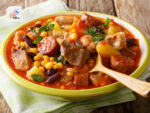
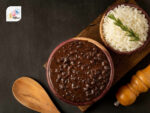
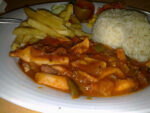
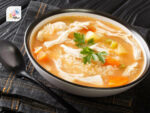
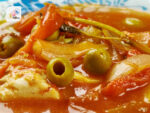
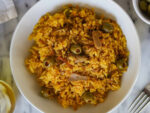
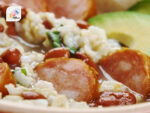
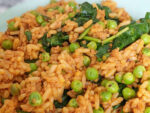
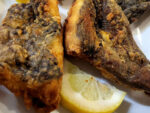
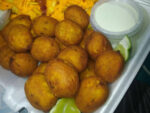
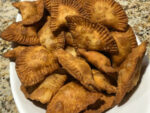
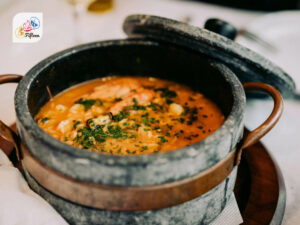
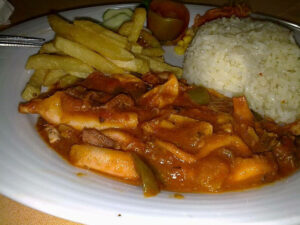
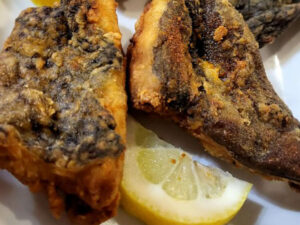
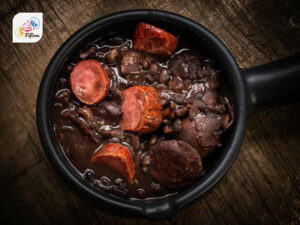
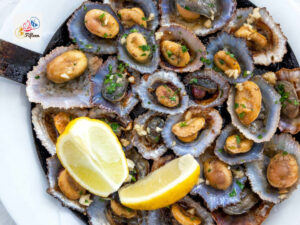
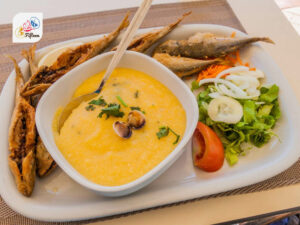
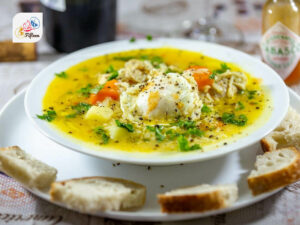

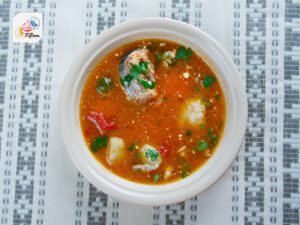
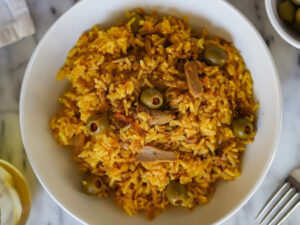
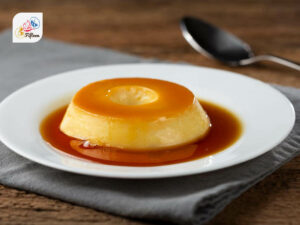
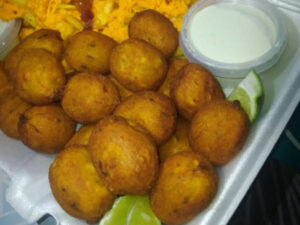
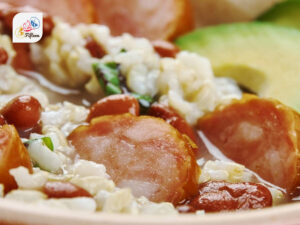
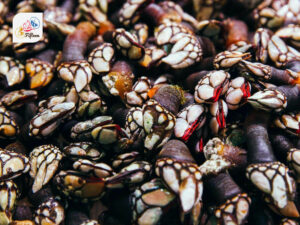
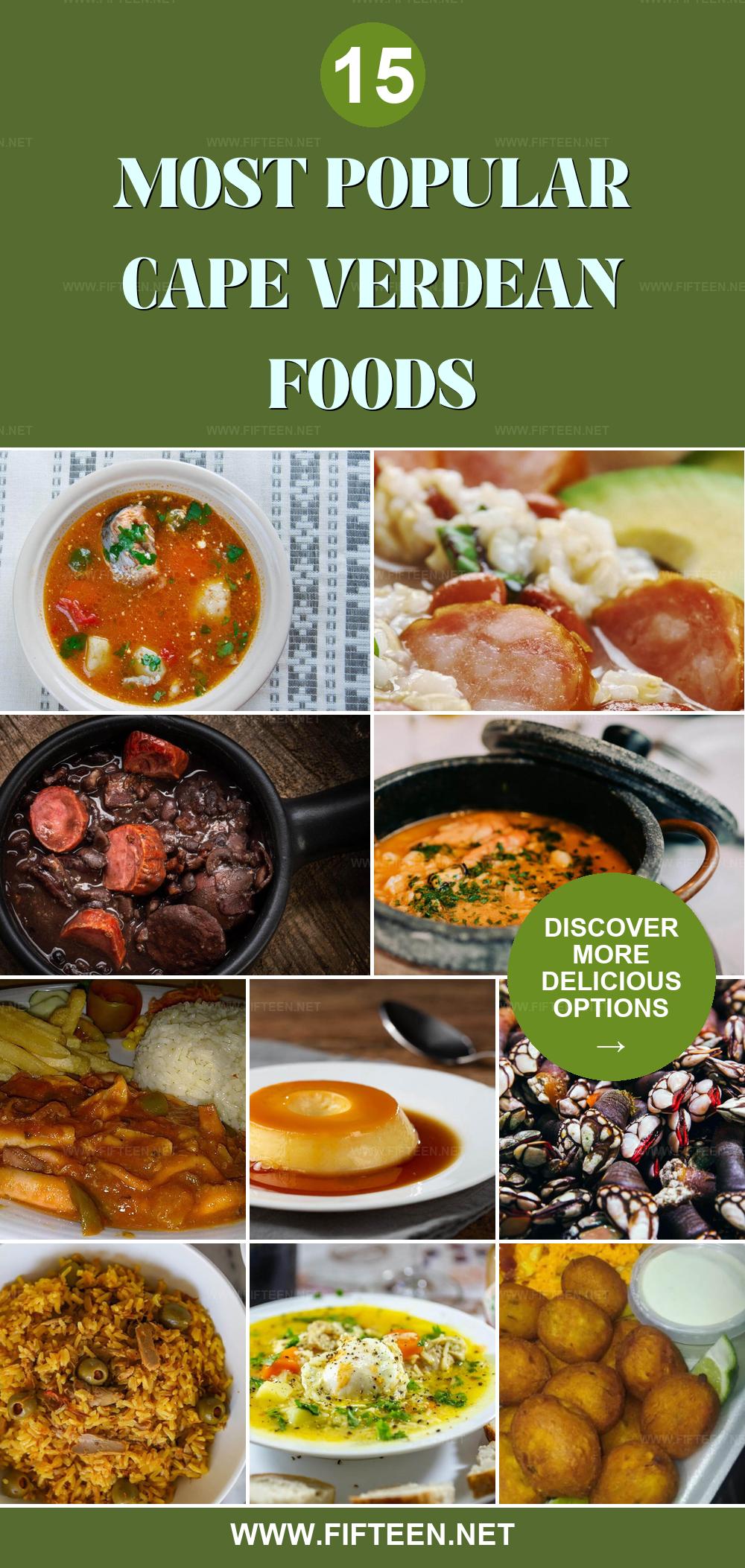
Jamie Scott
Editor in Chief, Senior Content Writer
Expertise
Home Cooking, Meal Planning, Recipe Development, Baking and Pastry, Food Editor, Cooking-video Maker, Western Food Evaluation Expert
Education
Le Cordon Bleu College of Culinary Arts
Local Community College, New York, NY
Jamie Scott is a skilled culinary expert and content creator specializing in Western cuisine. With over 15 years in the culinary field and formal training from Le Cordon Bleu, Paris, Jamie deeply understands how to blend nutrition with delicious flavors. His passion for cooking matches his commitment to making healthy eating accessible and enjoyable.
On Fifteen.net, Jamie brings a fresh perspective to classic dishes and beverages, offering readers insightful recipes, cooking tips, and a fresh view on meal planning that emphasizes taste, health, and simplicity.